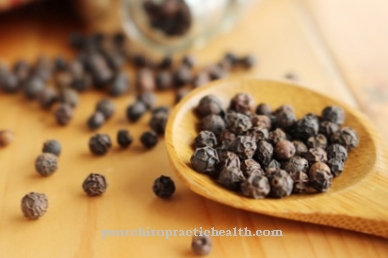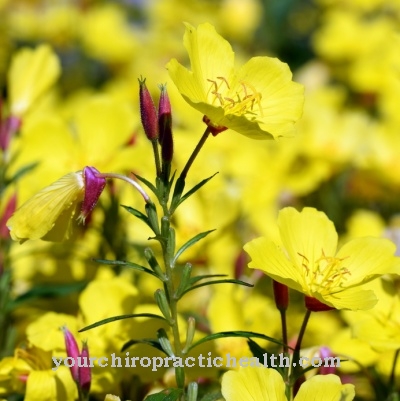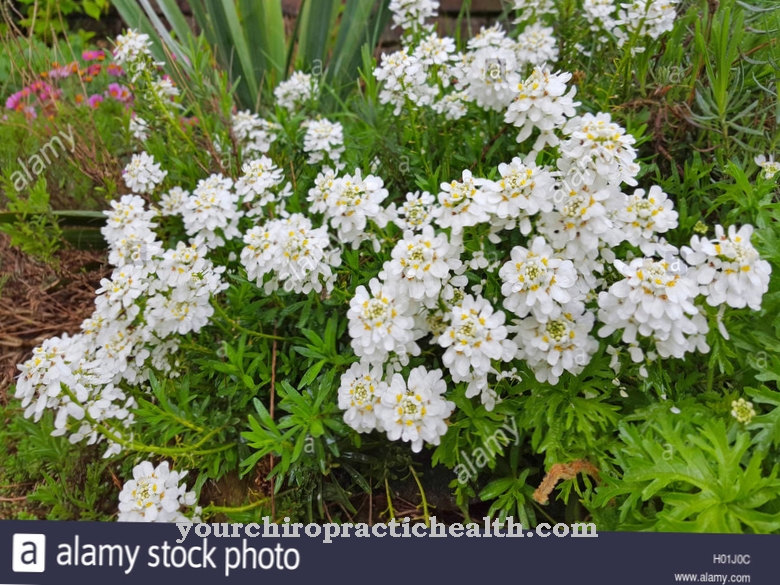It is undemanding and can be found almost everywhere. It has healing powers, but is also poisonous and should therefore only be used with due caution. Of the Acker-Gauchheil is an interesting little plant that is still used in homeopathy to treat various diseases.
Occurrence & cultivation of the Acker-Gauchheil

The plant, which originally comes from the Mediterranean region, has now spread almost all over the world. It can be found in fields, fallow land, rubble sites, in gardens or simply on the roadside.
Of the Acker-Gauchheil (Latin Anagallis arvensis) belongs to the primrose family (Primulaceae). In the months of May to October, the annual herb that creeps on the ground impresses with its bright red, bright, star-shaped flowers with a diameter of 10-15 millimeters. The plant develops its seeds in small capsule fruits, which reach maturity between August and October.
Because of its special property of closing its flowers when the sky is overcast or when rain threatens, the Acker-Gauchheil is also popularly known Weather flower, Weather herb or Fog plant. Dozens of other common names (for example Sparrowwort or Siskin) for example were mostly only used regionally. In England it bears - next to its official name Scarlet Pimpernel - the pretty name Pastoral barometer. Since the whole plant, especially the roots, contains a large amount of saponins, it is considered poisonous.
Effect & application
Anagallis arvensis is not used in conventional medicine because of the possible side effects. Homeopathy and spagyric use the herb, however, to treat painful liver and kidney problems, for mild depression and for skin problems such as psoriasis, eczema, acne or warts.
It is commercially available and is administered in the form of tablets, globules (typically in D-potencies), drops or teas, but can also be administered intravenously or intramuscularly as an injection solution. The entire plant is used for the preparation of the homeopathic medicine. In addition to the saponins already mentioned, the most important ingredients of the plant include various bitter substances, tannins and flavonoids.
Clinical studies on the effects of the Acker Gauch remedy on the human organism have not yet been completed, but have already been able to demonstrate its antiviral, antifungal and antioxidant properties. It also stimulates kidney activity, has a dehydrating, expectorant, fever-lowering and sweat-inducing effect. Applied externally as a poultice, it is also said to help against joint inflammation.
People who suffer from a primrose allergy are more likely to have an allergic reaction to Anagallis arvensis. For them, even simple skin contact with the plant can cause rashes. Even non-allergy sufferers should only use Gauchheil preparations in low doses (for example as part of a mixed tea) and never over a longer period of time, as otherwise symptoms of poisoning can occur.
These range from diarrhea, increased urination (diuresis) and inflammation in the gastrointestinal tract to a sudden drop in blood pressure or light anesthesia. In earlier times, the Acker-Gauchheil was ascribed magical powers as well as its medical powers. He should avert evil in general, but especially the evil eye. In a ritual of protection and purification, farmers fumigated their houses, stables and courtyards with Gauchheil. The Indians take advantage of the plant's weak toxicity when fishing.
Importance for health, treatment & prevention
The name "Gauchheil" testifies to the traditional use of the plant for mental and emotional disorders: "Gauch" was the name of the bird that we know today as the cuckoo. In a figurative sense, however, the word also meant a foolish, crazy person or simply a fool. Acker-Gauchheil was already used in ancient Greece to treat melancholy. Hippocrates used it in the form of a powder to treat malignant ulcers.
In Denmark, the strengthening effect of Anagallis arvensis was particularly appreciated in the past and it was also used externally in the form of cooling ointments and creams. In neighboring Norway, it was a tried and tested remedy for acid regurgitation. In Taiwan it is used to treat snake bites.
Homeopathy recommends Anagallis arvensis today as an effective remedy for certain skin ailments as well as for strengthening in extreme states of fatigue, if these occur as a result of intense mental activity. Acker-Gauchheil also treats patients who suffer from severe itching all over their bodies, who often have nosebleeds or who complain of "ants tingling" in their nasal cavities.
Its healing effects extend to many types of dermatological complaints, including skin irritations in the area of the fingers and palms. It also provides relief from itching in the anus area caused by hemorrhoids. The remedy is not suitable for curing hormonal rashes. Homeopathy also recommends Anagallis arvensis for male patients suffering from urethritis with painful urination, burning sensation in the urethra and purulent discharge.
Ancient herbal books prove that the Acker-Gauchheil played a major role in traditional folk medicine. Boiled in wine, it should act against poisonous insect bites and wounds, for example. Anyone who was bitten by a rabid animal washed the wounds with the brew. The herb boiled in water, used as a poultice, should cleanse wounds, relieve wound pain and promote wound healing.
Splinters and thorns should be able to be driven out. The fresh juice from the herb should eliminate warts, relieve toothache and - mixed with honey and put on the eyes as a poultice - even make cloudy eyes clear again. Because of its toxicity and the corresponding side effects, however, as early as the beginning of the 20th century, more and more alternative herbal remedies with similar medicinal properties were used.



























